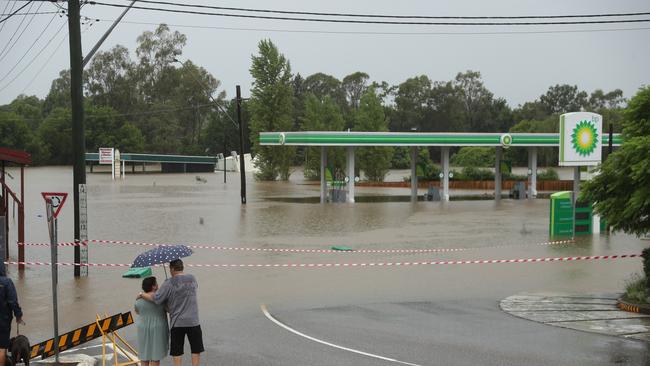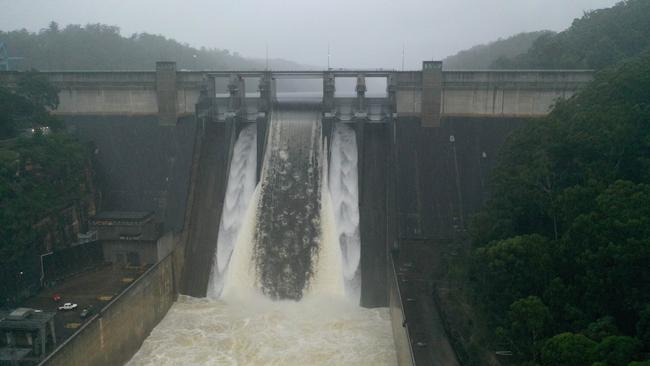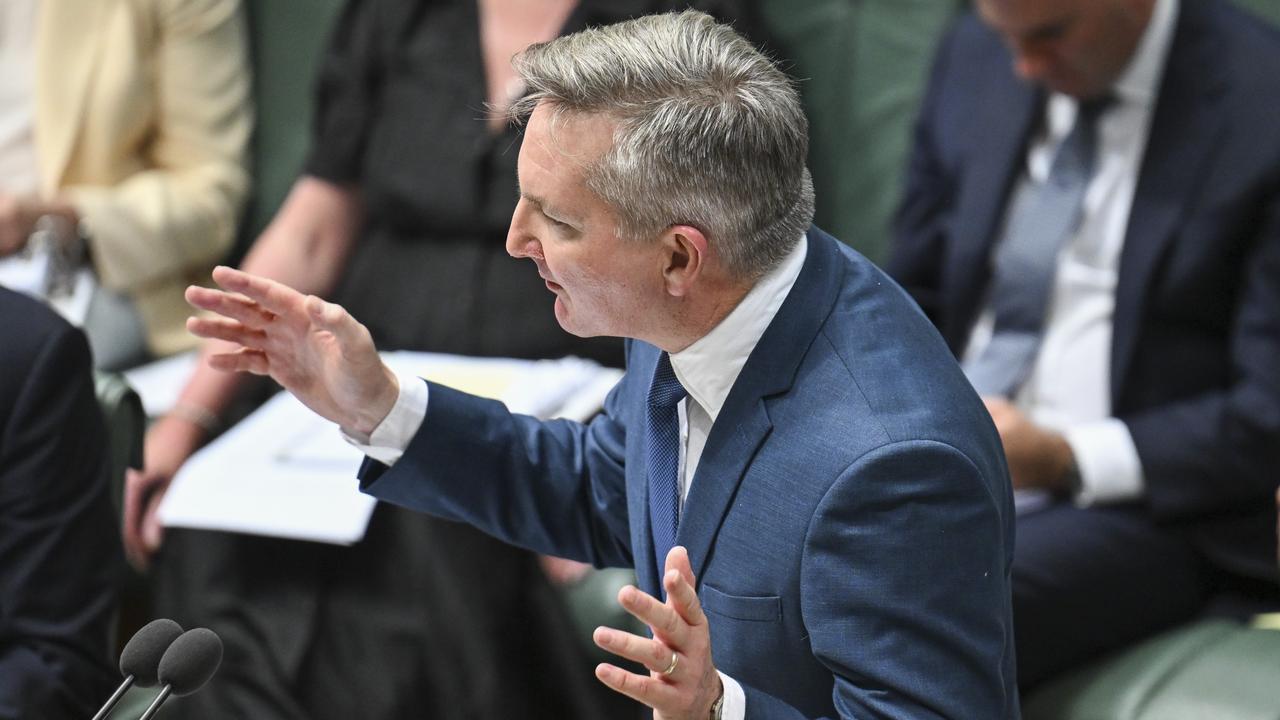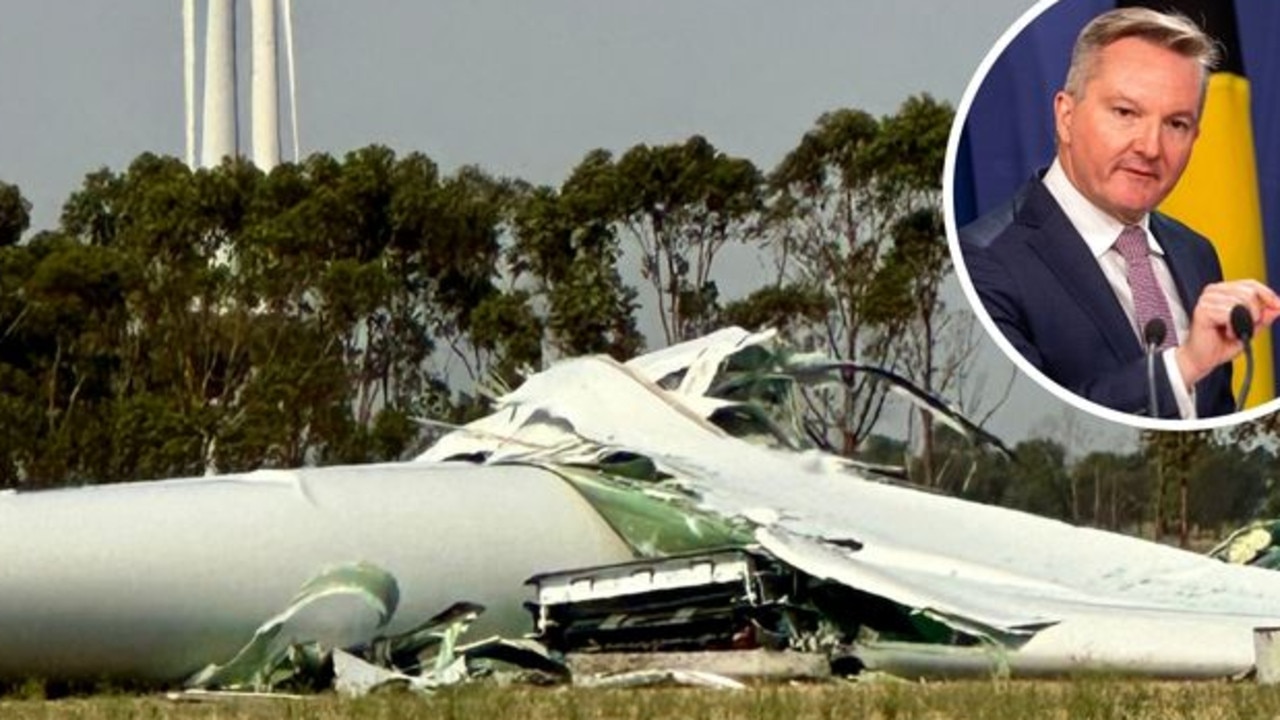Peta Credlin: Flooding has always been part of the Australian environment
The latest flood has been catastrophic for many Australians but it’s not been especially severe by historical standards. Yet, it is once again promoted as more proof of climate change, writes Peta Credlin.

Opinion
Don't miss out on the headlines from Opinion. Followed categories will be added to My News.
With every big weather event these days cited as proof of climate change, it’s worth looking at the historical record. Because where the records exist, it’s remarkable how relatively routine these weather events are.
At Windsor in western Sydney, for instance, where the underwater bridge has featured in much recent TV footage, records go back to 1799. While the latest flood has undoubtedly been catastrophic for all the people whose homes have been inundated, it’s not been especially severe by historical standards, nor has the frequency of recent flooding been particularly unusual. So if it’s all down to climate change, this must have been happening for at least the past 200 years, and not just in the past few decades since we’ve become scared of it.
The Windsor flood peak, in March last year, was 12.9m. In March this year, the peak was 13.8m. And in this flood, it’s 13.9m. These have all been very destructive floods, no doubt about that, especially given the massive development in western Sydney in the three decades since the last significant flood in 1992, which peaked at just 11.1m.
However, between 1809 and 1978, on no fewer than 10 occasions, floods at Windsor peaked at over 14m. The 1978 flood peaked at half a metre higher than the current one. In 1816 and 1817, there were two floods within seven months that peaked higher than any of the three we’ve just had, in the past 15 months.

And the daddy of all floods, happened way back in 1867, peaking at 19.7m, or almost six metres higher than the current one. In terms of frequency, there have been six occasions between 1816 and 1990 when there were three major floods in under three years. In 1860, there were three major floods in a single year, at least as measured by the river peaks at Windsor. The most unusual feature of the recent floods has actually been the 29-year flood-free period that preceded them. But even this is exceeded by the 38-year gap between the floods of 1819 and 1857.
It’s noteworthy that while this month’s flood peak at Windsor exceeded the flood peak in March, climate alarmism actually peaked four months ago while Scott Morrison was still prime minister. Remember how the floods in March, that were especially severe in Lismore in northern NSW, were blamed on the Morrison government. Greens leader Adam Bandt was typically hysterical, claiming that “Scott Morrison’s only got himself to blame … He’s the one who has made terrible decisions, he’s fast-tracked the climate crisis (and) he’s refused to come and talk to locals about the floods that he helped cause”.
To Bandt, Morrison literally had “blood on his hands” even though Australia’s record in cutting emissions has actually been much better than a large number of countries such as Canada and New Zealand, despite the posturing of their leaders.

Unsurprisingly, with a change of government, climate change alarmism has somewhat receded, even if the floods haven’t. Last week, Prime Minister Anthony Albanese readily conceded that “Australia has always suffered from natural events, be they floods or bushfires, so we can’t say that every single event is because of climate change”.
Amazing what a difference an election campaign makes isn’t it? Still, the PM didn’t altogether abandon his green-left creed. “What we can say” he went on, “is that extreme weather events are occurring more frequently and with greater intensity” due to climate change. Only not floods at Windsor.
As the historical record shows, the recent ones have actually been nothing-especially-out-of-the-ordinary, notwithstanding the heartbreak they’ve caused to all those impacted or the billions they’ll now cost taxpayers.
How can it be all down to climate change, if the worst flood happened more than 150 years ago; and how is reducing emissions going to reduce flood severity, if the worst flood happened at a time when Australia’s emissions were minimal and global CO2 concentrations were about 25 per cent less than now?

And while it has to be conceded that this year’s Lismore flood was indeed the worst on record, two metres above the previous peak in 1954, there have been 29 major floods in that town since records were first kept in 1887. It was way back in 1906 that the poet Dorothea Mackellar famously described Australia as a “land of droughts and flooding rains” and this is likely to remain the case regardless of how much further the current government manages to cut emissions. At least, with a new federal government in place, responsibility for this particular flood isn’t being pinned on the government itself for allegedly not doing enough to tackle climate change.
But any government that really wants to help ameliorate natural disasters will need to focus on practical measures rather than emissions reduction. One way could be to raise the Warragamba Dam wall to give it a flood mitigation role.
And get on building dams so all this rain doesn’t keep flowing out to sea, and instead we get it from the places where there’s too much, to the places where with more water, we could increase our agricultural production, and our export dollars.
Sounds commonsense I know, but since when has the climate debate been sensible?
MORE ABOUT THE VOICE NEEDS TO BE HEARD
AS the Albanese Government starts exploring dates in late 2023 to hold their planned referendum on an Indigenous ‘Voice’ to the Parliament, it seems there are games going on about what this body will actually entail.
Last week Indigenous Affairs Minister Linda Burney said she wanted voters to sign a blank cheque: first to get the constitution changed; and only then, afterwards, to decide what this race-based Indigenous voice to the parliament might look like.
She wants to leave the detail to later so that this referendum won’t fail – like the republican one – because some republicans-in-principle didn’t like the particular republic on offer.
“It’s really important” she said, “that the question be about whether there should be a voice, not about what sort of voice it should be”. She said that the 1999 republican referendum had failed because “the debate was around the model, not whether or not we should be a republic”.
But that’s surely the whole point? How do you decide whether you’re in favour of something, if you don’t know exactly what that something will be?
Frankly, it’s a dishonest way to proceed, but that’s exactly what Linda Burney is proposing. First, enshrine a voice in the constitution by asking Australians to vote on nothing more than a ‘vibe’. And then, if it gets up, leave it to Labor and Aboriginal leaders (and activists) to decide exactly what that ‘Voice’ should be. Will it mean a new race-based electoral role to elect members of the Voice? What happens if advice to the parliament from the Voice is at odds with elected MPs? And given there are now 11 Indigenous people in the new parliament, in proportionate terms more than the number of Indigenous people in the Australian population, why do we need this Voice anyway?
Dividing Australia into two racial camps – Indigenous and non-Indigenous is a bad idea, and the sooner the Coalition opposes it in principle the better. No Liberal Party worthy of the name should need any “detail” to declare that a race-based body is wrong on every level.
WATCH PETA ON CREDLIN ON SKY NEWS, WEEKNIGHTS AT 6PM





